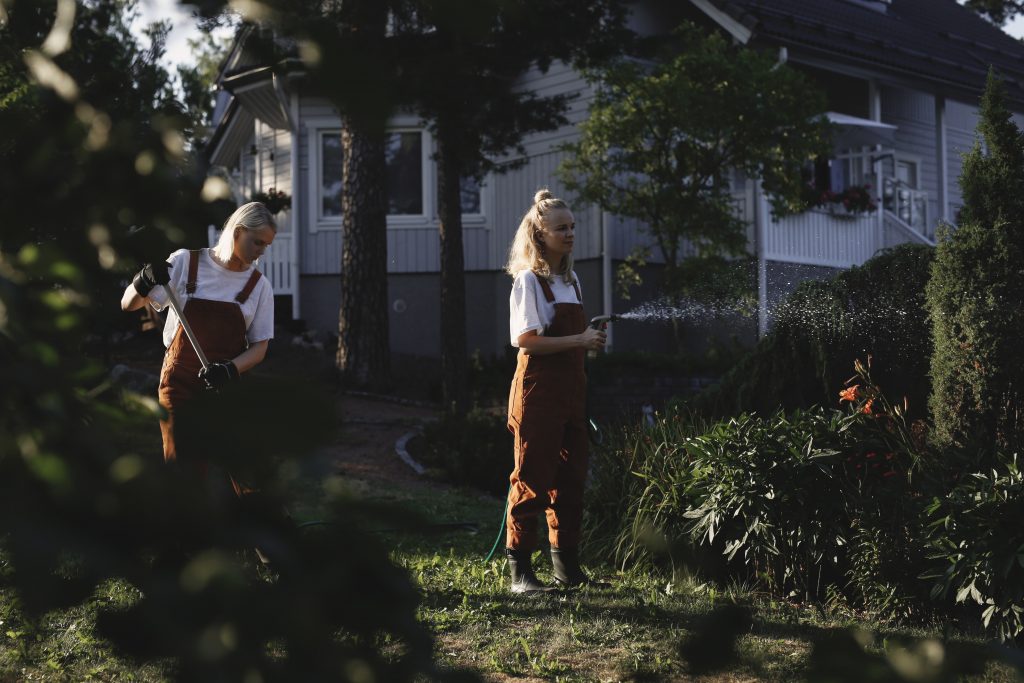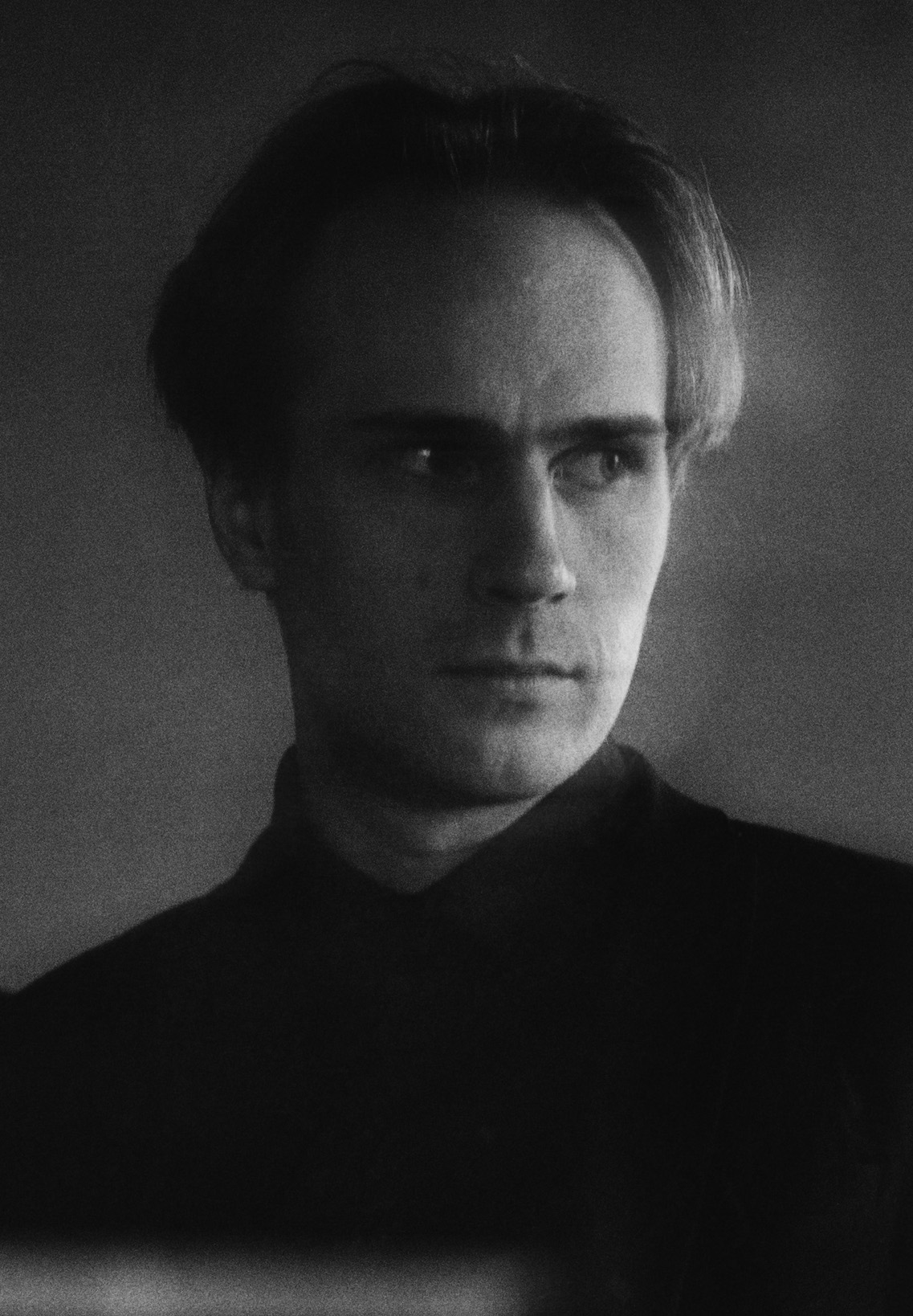Two friends are sitting around a grand dining table in the hush and dark of the night, dressed up in all-black clothing like thieves or, one may say, murderers. They are whispering to each other in a house that is sleeping, and something tells the spectator that they should not be in there.
This is how Silent as Murderers, Lauri-Matti Parppei’s newest short film, starts. The film will be screened at Institut finlandais on the 3rd of February as a rerun of the Focus program of Les Arcs Film Festival, that had Finnish and Baltic contemporary cinema in the limelight. Lauri-Matti Parppei (born in 1984) is a filmmaker, musician and graphic designer from the coastal town of Rauma, Finland. Newly graduated from Aalto University’s program for film directing, he has made several short films, treating topics such as relationships, loss and loneliness. We had a talk with him about the identity of a filmmaker and his first feature film.
The discussion with the young filmmaker travels quickly to the do-it-yourself community of his hometown Rauma, where Parppei discovered his voice through experimenting with different forms of artistic expression in an environment that was free of restrictions. On this day, Parppei still feels the influence DIY culture has on his identity as a moviemaker. The most essential thing in doing-it-yourself wasn’t the perfect result – more important was to do something that had meaning for oneself. Parppei carries this ideology with him today. “I feel that my way of working is still very influenced by the DIY mentality, as my creative work has always gotten its beginning from a rather spontaneous and impulsive starting point. It has taken me time to get used to the idea that making and funding a short film might take several years. After all, the screenplay is only a few pages long.”
The last two short films were granted fine funding. The set, before put together with glue and stapler, went through a change. Among the financial support came a new sense of responsibility and patience, that Parppei is still trying to get used to. “When you have gotten a good budget for a film, you become a bit burdened by your privileged position”, he laughs. “I remember when the camera crew was carrying in all the equipment, and I ran to help them, they said to me “Oh, you don’t have to do anything.” For me being a director has always meant that I want to do these things. I have gotten used to doing things differently, so now, when I have made a few films with funding, I have tried to push my ego to the side a bit too much even.” Nonetheless, Parppei will still pursue working with zero budget projects that allow him to spend more time on directing itself.
“I think that films came along when I realised that they create a platform where it is possible to combine an image, music, and writing. Cinema created an intersection where these things merged into one.”
In addition to directing, Parppei is also behind the screenplay and music of his films. Alongside making films, Parppei plays in a post-pop band called Musta valo (Dark light in Finnish). He tells me that he got into making movies partly through music. “I remember when I became interested in making films as a child, but the idea was completely distinct from music for a long time. However, I think that films came along when I realised that they create a platform where it is possible to combine an image, music, and writing. Cinema created an intersection where these things merged into one.” Music also carries a significant role in the process of screenwriting. “I often make music for the film during the writing process. It helps me imagine the feeling and emotion of the film. Sometimes I feel like I have a bit too much music in my films as I have already imagined it inside the story.”

At the instant, Parppei is making his first feature film, A Light That Never Goes Out. Music and the director’s background in the DIY community of his hometown also have a central role in this film. It tells a story of a cutting-edge flautist, who moves back to her hometown to live with her parents after trying committing a suicide. She meets her old friend from school who has stayed in the town and started making bizarre art. Together they start to create music such no one has heard before. It is a story about healing and getting better, which, despite its gloominess, is very funny and hopeful. “The film is based on my background as a musician in a small town. It is quite a different thing to be creating weird stuff in Rauma in comparison with Paris or Berlin, for example. The topic fascinated me.”
“I find it important to treat themes that are real and happening. I trust that the subjects that I find thematically large are that for others as well.”
Parppei often finds inspiration for his cinema from his personal experiences. The topics of his films may feel intimate, but at the same time, he strives to mirror similar experiences to the spectators. “My movies turn their gaze more to the audience, thus creating a safe environment for myself to handle personal topics”. Parppei tells me that he has aspired to preserve some documentary films’ characteristics in his cinema, although it is not always visible on the outside. For example, he often casts inexperienced actors in his movies thinking that they might have gone through the same kind of experiences as the characters they are playing. “I find it important to treat themes that are real and happening. I trust that the subjects that I find thematically large are that for others as well. After all, I think my own experiences are something I can portray the best”.
Parppei’s films depict close relationships, loss and longing. Lovers spend their last day together, an ex-couple speaks on the phone for the first, and possibly the last time after their break up. I ask what this theme means for him. “In pop music songs often tell about the same things. It is very repetitive. In films, however, people often grave for more surprising and diverse contents. As for me, I like to handle the same topics and approach them from different perspectives in different ways. Kind of like making those pop songs.”

We end up discussing his film, Silent as Murderers, in more detail. Thrilling and tip-toeing in its ambience, the film follows two friends spending their last summer together in their hometown. During the day they are working as gardeners, but at night, they sneak into other people’s homes while the residents are sleeping. Parppei was asked to make a different film from his earlier production, but Silent as Murderers also has its basis on the filmmaker’s friendships. “In some sense, this film tells mainly about how my friends got funding for their projects and I didn’t”, Parppei tells laughing. “In 2015 when I was writing this film, this was the kind of feeling I had – that all these people, who are more intelligent, courageous, talented and lovely, are moving forward, and very rightfully so. I wrote this film to deal with these feelings of frustration. We started filming three years later when I felt like I didn’t know who wrote this film. Although my style has changed through the years, this film has maintained something I can hold onto.
Working with close friends can sometimes bring out feelings of insufficiency and insecurity, Parppei mentions. However, the word ‘filmmaker’ is starting to feel familiar. “Before I have said that I am just someone doing a bit of cinema, but I have gradually gotten the courage to call myself a filmmaker.”.
Text: Veera Mietola
